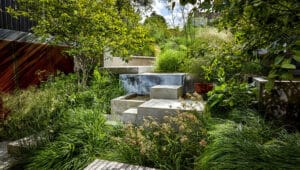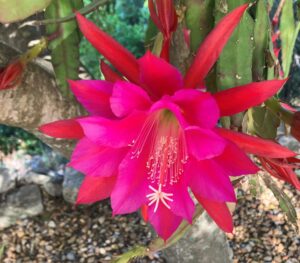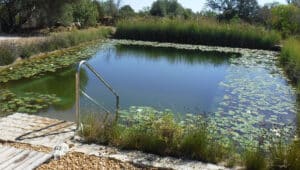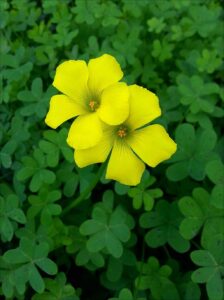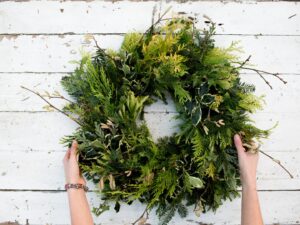Since becoming a professional gardener, I have only ever lived in apartments, so my own gardens have been limited to what will grow well in pots. I had always seen this as a misfortune, forever hankering after a little plot of earth in which to dig and create. But now I see it as a blessing – I have experienced many fascinating species that would perhaps not have suited life in open ground.
Virtually any plant can be grown in a pot, given the right conditions – how else, indeed, could nurseries make their living? – but of course you’ll get better results if you choose plants suited to your situation. Nonetheless, you can “cheat” a bit: in a pot you control the soil, food and water, much more than you can in the ground, which allows for fun and experimentation.
What I really want to share with you, though, are the plants which thrive without much care; the ones which brighten up a corner and don’t make you work hard for it, will forgive you if you go away for a couple of weeks in the summer and forget to water, and generally just happily sit there, doing their thing. Follow these simple steps and you will be amazed at what you can keep on the balcony.
When buying a pot, choose one that allows for a good five centimetres all the way around the plant’s roots, to allow room to grow. A layer of broken crocks or stones at the bottom helps drainage (don’t plant straight into a pot with no holes – excess water kills), and a layer of gravel or stones on the top, apart from aiding drainage here too, is decorative, suppresses weeds and stops mess and erosion from splashing.
For potting media, I am a great believer in a mixture of organic (coco-peat, compost or other) with garden soil. Mineral soils have better nutrient exchange properties, do not decompose so quickly as organic composts, and are able to re-wet and retain water better. Sieve the soil to remove larger stones and clumps and, if your soil is particularly heavy, add a little sharp sand or fine grit to the mixture as well – think 2:2:1, organic:soil:sand.
I can’t emphasise enough the importance of watering properly. Overwatering is perhaps the most common cause of death for potplants, indoors and out. Constantly wet roots cannot breathe – the water needs to drain to allow air into the soil. Horrid fungal things love overly damp soil, too, and provoke all kinds of rots.
But when should you water? Once a day? Once a month? When it’s a full moon? Well, this will vary according to the weather and the plant’s growth patterns, but, happily, there is a simple rule. Lift the pot up – if it feels heavy, it is fine. If it feels light, water it.
Feeding is important, too, but again – don’t overdo it. I like to use a granulated slow-release general fertilizer, which provides all the nutrients the plant will need over the course of several months.
I usually do one application of slow-release fertilizer per year, in spring, when most plants are kicking into their active growth period. Some prefer to use a liquid fertiliser, such as tomato feed, once or twice a month – these tend to be better for herbs and vegetables, which put on more growth in a small space of time. In either case, do be careful with doses – a higher concentration does not necessarily equal more growth; it can exhaust the plant and burn the roots.
Finally, once every year or two tip the plants out and give them a good renovating prune to the roots. Whether staying in the same pot or moving up a size, this will remove congested and inefficient root growth and allow space to add fresh soil to the pot.
Pots are never completely maintenance-free. There will always be a little watering, occasional weeds pop up, petals and leaves fall, and cobwebs need dusting, especially from succulents and cacti.
And I have to say I do not recommend the silver-leaved mediterranean climate plants; they prefer to get their roots deep into the soil and stay dry in the summer. But there are subjects that will reward you with much, in exchange for very little.
Many bulbs and almost any cactus or succulent are worth a try, while some shrubs, perennials and even trees do well with a large pot.
Some of my favourites include: Aeoniums; Aloes; Arbutus; Billbergia; Clivia; Crassula; Cymbidium; Euphorbia – E. millii is particularly good; Haworthia; Hippeastrum; Kalanchoes – a huge and diverse range of foliage; Pelargonium – P. sidoides is a favourite; Plectranthus – especially P. argenteus; Punica; Sedum; Stapelia; Tradescantia. Above all, have fun – choose the plants that make you smile.
|| features@algarveresident.com
Marilyn Medina Ribeiro has degrees in Graphic Design and Landscape Management and has worked in nurseries, parks and private gardens. In 2008, she moved to the Algarve, managing hotel gardens and later founding her own company to promote sustainable land management.
waterwise.marilyn@gmail.com


